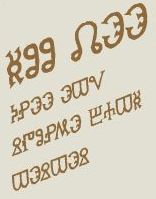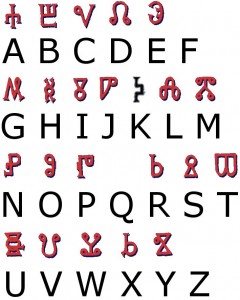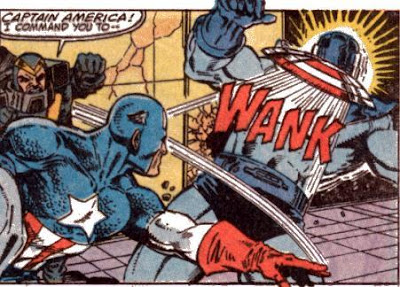Here’s a tiny crypto puzzle for you from the award-winning Adrenalini Brothers cartoon series. There, the three eponymic death-defying stunt brothers (Xan, Enk, and Adi) speak a language called Réndøosîan (sample phrase: oofa vamy bakeesh = “you can’t get anything right“): of course, this is simply a trick animation companies use to avoid localization costs (as with Pingu). However, whenever you see writing on screen, it’s not Rendoosian (sorry, “Réndøosîan”) but ciphered English. So what does the following (from “Box of No Return”, a Houdini-esque escapology skit involving a sealed box, a crane, and sharks) say? You’ll probably never guess, even if you live to be 199…

Actually, that’s a little bit too small to read comfortably: so here’s a larger version of the same page:-

OK, OK: seeing as I’m actually a pussycat rather than a cryptographic sadist, here’s the vaguely Voynichesque cipher key (or rather, as much of it as I could reconstruct from the intros to the flash cartoons, which is why there’s no F, Q and Z *sigh*):-

Deciphered it all yet? You like, yes? If so, here’s the next page for you to decipher, too… Enjoy! 🙂

Incidentally, here are some direct links to the first ten Adrenalini Brothers Flash episodes from 2002: these open in a normal (resizable) browser window, so you can enjoy them in all their full-screen glory (recommended!):
1 – High Dive of Doom,
2 – Ocean of Terror,
3 – Volcano of Venom,
4 – Monster of Mayhem,
5 – Wings of Destiny,
6 – Box of No Return,
7 – Slopes Of Peril,
8 – Joust of Glory,
9 – Cannon of Chaos,
10 – Tightrope of Triumph
“Yahzaa!” 🙂





